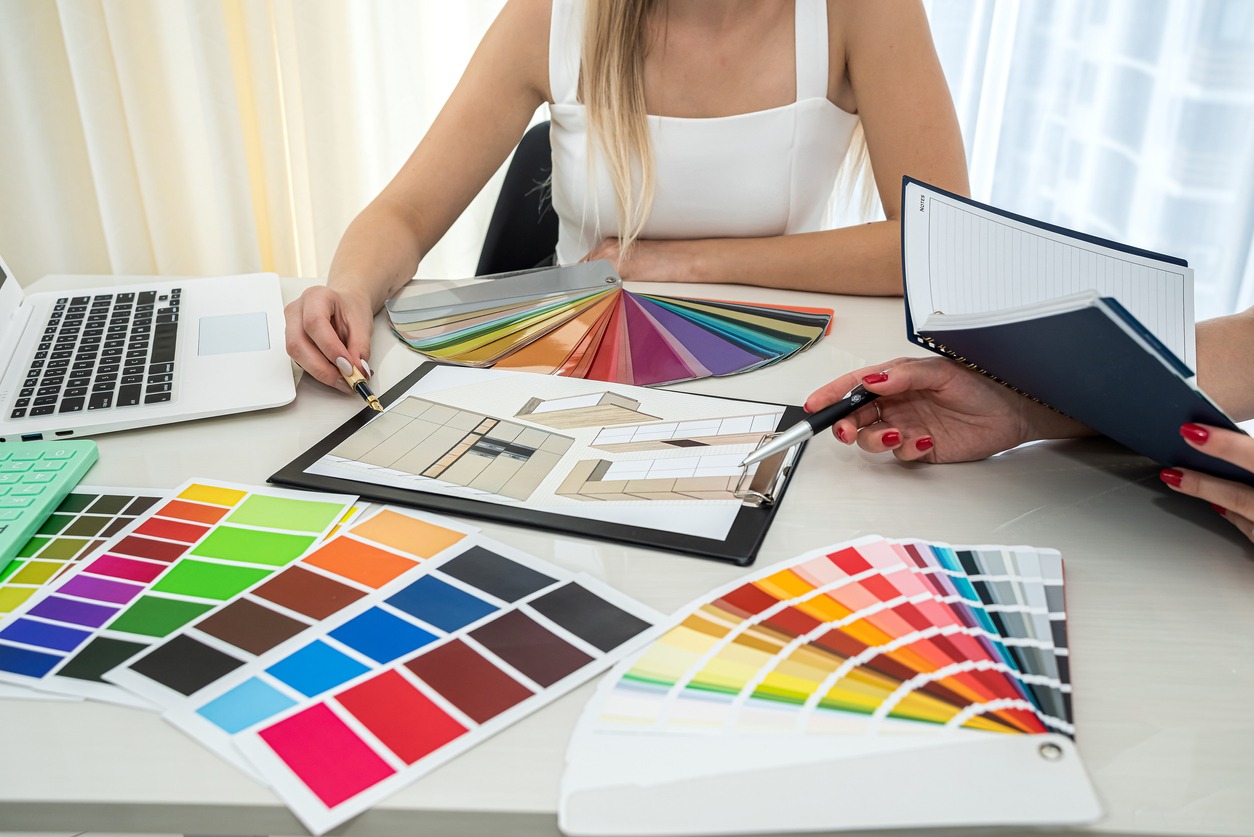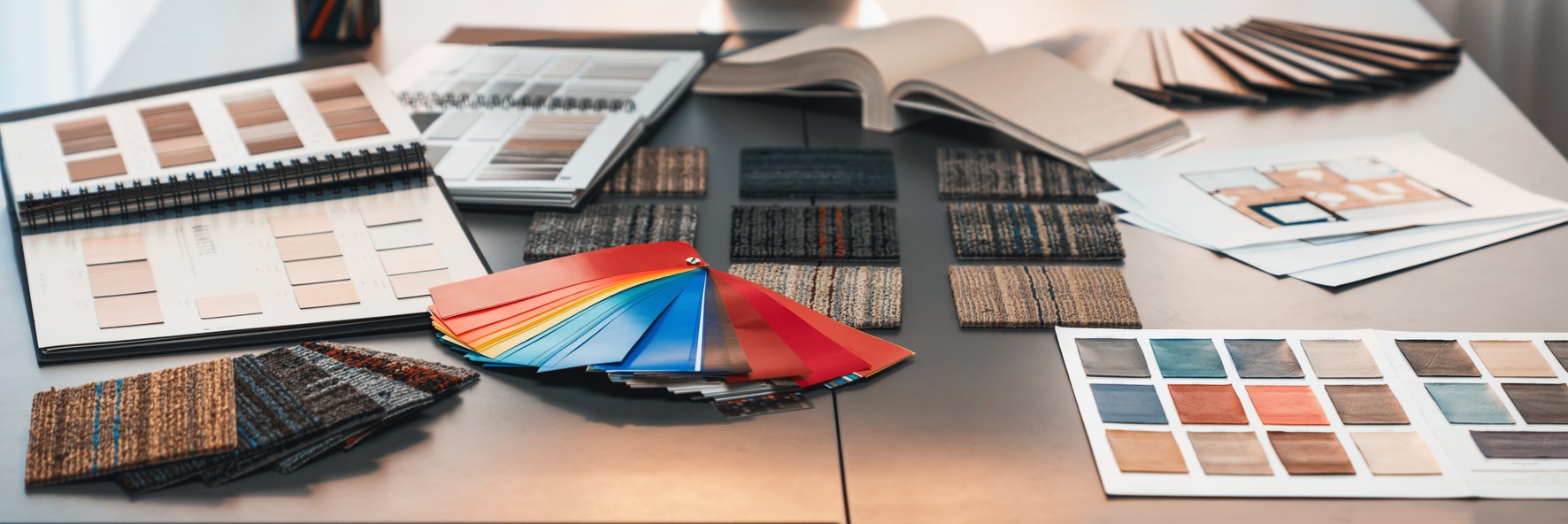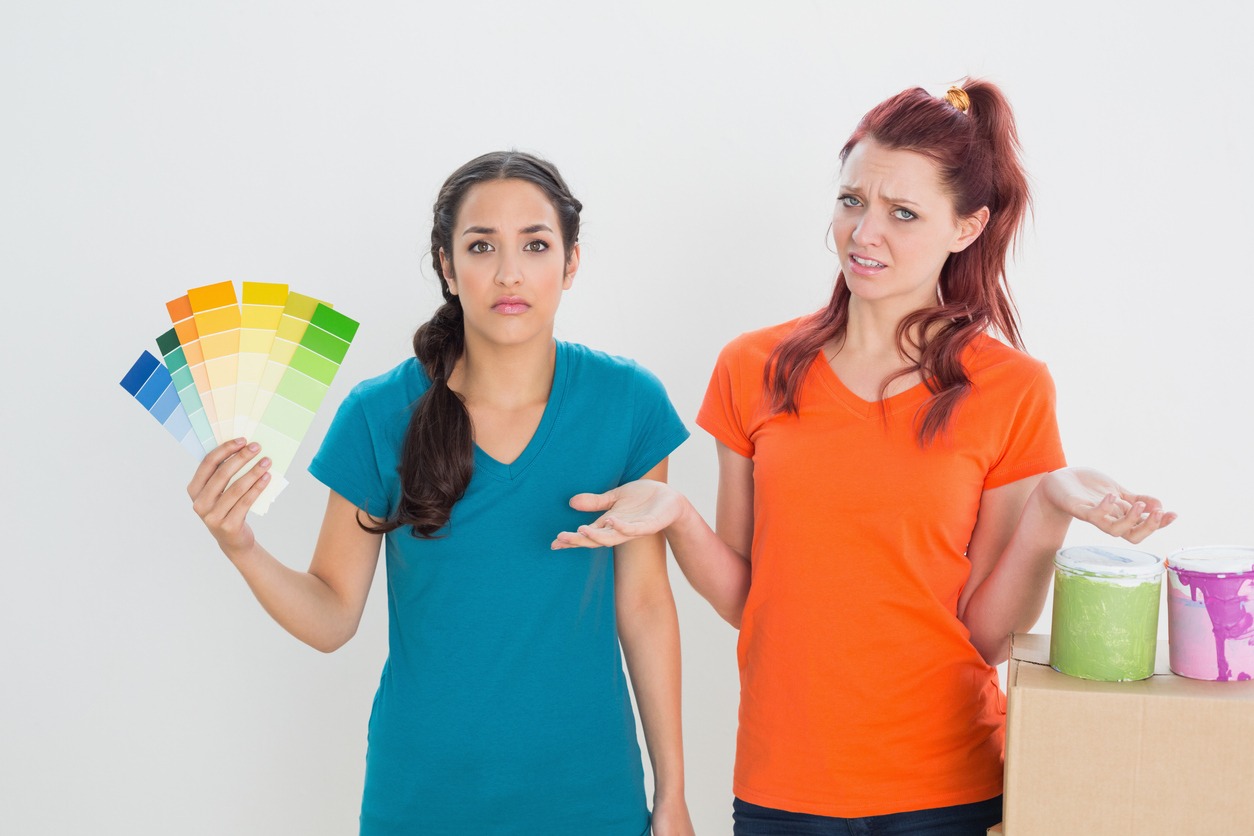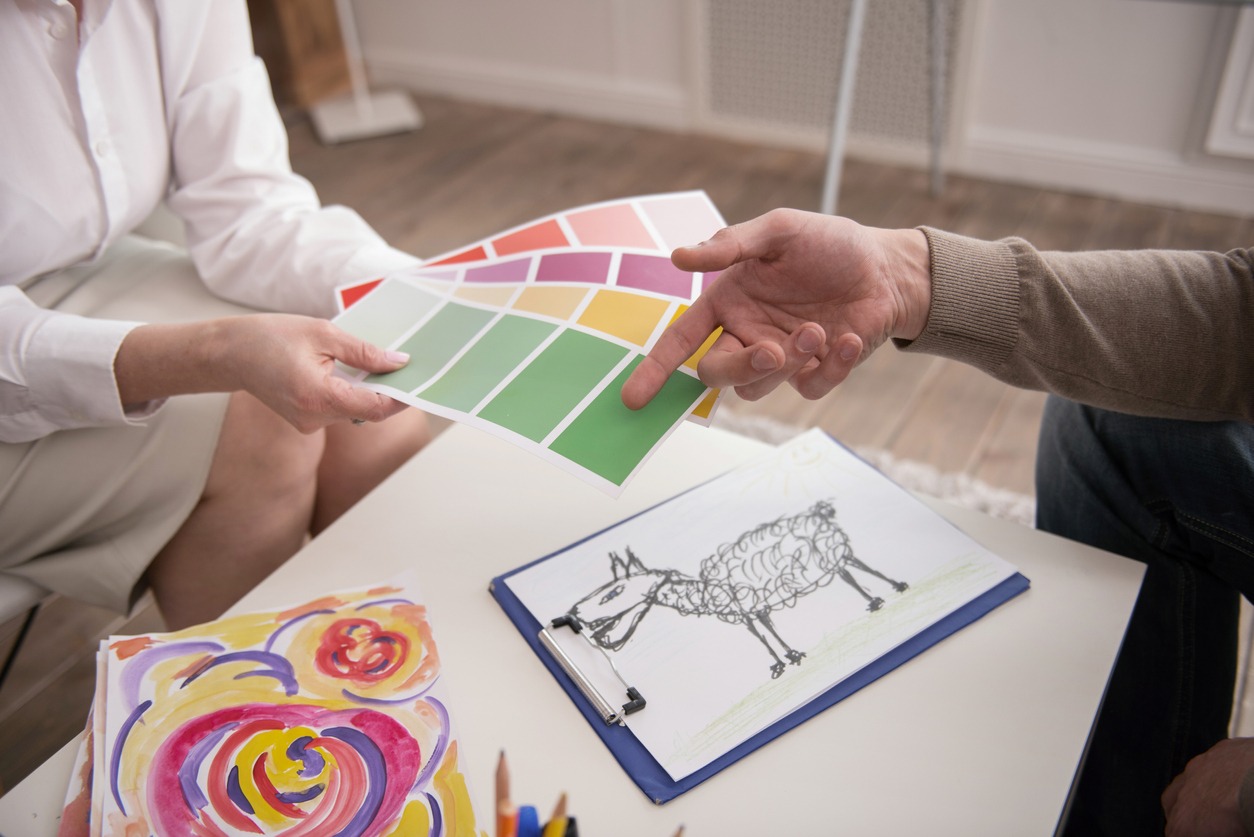Interior design is an art form that transforms spaces into experiences, weaving together aesthetics, functionality, and comfort. At the heart of this transformation is color, a powerful tool that can dramatically alter the ambiance of a room and affect the emotions and behaviors of its inhabitants. The psychology of color in interior design is a nuanced and fascinating subject, exploring how different hues can create mood, convey messages, and even impact physical well-being.
The relationship between color and emotion is not just a matter of personal preference; it’s a dynamic interplay that’s been studied and understood through various psychological lenses. The use of color in interior design goes beyond mere decoration; it’s a strategic element that can enhance the functionality and emotional appeal of a space. Whether it’s the calming blues of a bedroom, the energizing yellows of a kitchen, or the sophisticated blacks and whites of a living room, every color choice is an opportunity to evoke a specific emotional response.
This comprehensive guide delves deep into the psychology of color in interior design. It explores the basics of color theory, the impact of different colors in various room settings, cultural and personal influences on color perception, practical tips for applying color psychology, and the challenges and considerations when implementing color strategies. By understanding the psychological effects of color, interior designers and homeowners alike can create spaces that not only look beautiful but also feel harmonious and aligned with their intended purpose.
The Basics of Color Psychology
Color psychology, an intriguing field at the intersection of art and science, delves into how color influences human behavior and emotional well-being. Its roots trace back to ancient civilizations where colors were believed to have healing powers, a practice known as chromotherapy. In the modern era, this concept evolved, integrating principles from psychology and design to comprehend how color affects mood, perception, and behavior.
Historically, color psychology has been a topic of interest among various cultures and scholars. The ancient Egyptians and Chinese used colors for their therapeutic properties, associating different hues with specific healing qualities. In the 19th century, Johann Wolfgang von Goethe, a German writer and statesman, published “Theory of Colours,” which explored the psychological effects of colors, laying the groundwork for future studies. This work diverged from the purely scientific approach of Sir Isaac Newton’s color theory, offering a subjective perspective on the emotional impact of colors.
In contemporary color psychology, the emotional and psychological impacts of color are studied extensively. For instance, red is often associated with energy, passion, and danger, stimulating feelings of excitement or intensity. Blue, in contrast, is linked to calmness and serenity, frequently used in environments where peace and concentration are desired. These emotional associations are not mere cultural constructs; they are rooted in psychological responses. For example, red can trigger an increase in heart rate, signaling alertness or urgency, while blue’s calming effect can lower heart rate and promote relaxation.
Primary Colors and Their Psychological Implications:
Red: A stimulating color, evoking warmth and aggression.
Blue: Represents tranquility and stability.
Yellow: Associated with joy and energy; can signal caution.
Secondary Colors – Created by Combining Primary Colors:
Green (Blue + Yellow): Linked to nature, growth, and renewal. Calming, with a sense of balance.
Orange (Red + Yellow): Radiates warmth and enthusiasm; friendly but can be overwhelming.
Purple (Blue + Red): Symbolizes luxury, creativity, and spirituality.
Tertiary Colors – Formed by Mixing Primary and Secondary Colors:
- Provides a broader spectrum for nuanced emotional and psychological responses in design.
- Allows for subtle variations to evoke specific moods or atmospheres.
The concept of color temperature plays a pivotal role in color psychology. Warm colors, like red, orange, and yellow, are perceived as warm because they evoke the warmth of the sun or fire. They are stimulating and can create a sense of coziness and intimacy. In contrast, cool colors, such as blue, green, and purple, are reminiscent of water and the sky, imparting a sense of calm, relaxation, and refreshment. The temperature of a color can dramatically alter the perception of a space; warm colors can make large rooms feel more intimate, while cool colors can make smaller spaces appear more open and airy.
In the realm of interior design, understanding the basics of color psychology is essential. By comprehending how different colors affect mood and behavior, designers can create spaces that not only fulfill functional requirements but also resonate emotionally with their occupants. Whether it’s a vibrant red kitchen that stimulates the appetite and social interaction or a serene blue bedroom conducive to relaxation and sleep, the strategic use of color can transform an ordinary space into an extraordinary experience.
Color Psychology in Different Rooms
The application of color psychology in interior design is not just about choosing attractive hues; it’s about creating environments that enhance the function and emotional atmosphere of each room. Let’s explore how color can be strategically used in various rooms of a home.
Living Rooms
The living room, often the first space guests encounter, sets the tone for the entire home. It’s a place for relaxation, socializing, and entertainment, requiring a color palette that is welcoming and harmonious. Warm neutrals like beige, taupe, and soft grays are popular as they provide a subtle backdrop, fostering a sense of calmness. These colors are versatile, allowing for easy incorporation of accent colors through decor. For a more dynamic space, rich blues or greens can be used to create depth and interest. These colors promote a sense of tranquility and balance, essential in a room used for both entertainment and relaxation. In larger living rooms, darker shades can add a sense of coziness and intimacy.
Kitchens
The kitchen, often referred to as the heart of the home, benefits from colors that stimulate the appetite and promote energy. Warm colors such as reds, oranges, and yellows are known to stimulate the appetite and evoke feelings of warmth and comfort, making them ideal for kitchens. However, it’s essential to use these colors judiciously as they are quite stimulating. Lighter hues like buttery yellows or peach tones can create a cheerful and inviting atmosphere without being too overpowering. For a more modern and clean look, whites or light grays paired with accents of brighter colors can create a sleek yet energetic environment.
Bedrooms
Bedrooms are personal sanctuaries, and the colors chosen should promote relaxation and restful sleep. Soft, calming colors are ideal. Pale blues, lavenders, and soft greens are excellent choices, as they have a calming effect on the nervous system. These colors can help lower blood pressure and heart rate, which is conducive to relaxation and sleep. Neutral tones like light gray, beige, and taupe can also create a serene and sophisticated ambiance. For those who prefer a touch of drama, deeper shades like navy or forest green can be used in moderation, perhaps on a feature wall, balanced by lighter shades elsewhere.
Bathrooms
Bathrooms should be a space of cleanliness and rejuvenation. Light, airy colors like soft blues, greens, and cool grays can create a spa-like atmosphere. These colors evoke a sense of cleanliness and freshness. Pale blues and greens, reminiscent of water and nature, are particularly effective in creating a tranquil and refreshing space. For smaller bathrooms, lighter colors can make the space feel larger and brighter. Accents of white or cream can add a sense of cleanliness and simplicity.
Children’s Rooms
Children’s rooms are spaces for sleep, play, and growth, and the colors used should reflect this versatility. Bright and stimulating colors can encourage creativity and positivity. Vibrant greens, blues, and yellows are excellent choices as they are lively yet not overwhelming. It’s important to consider the age and temperament of the child; for instance, softer hues might be more appropriate for young children or those particularly sensitive to their environment. Incorporating multiple colors, perhaps through accessories or wall art, can create a playful and stimulating environment.
Home Offices
With more people working from home, the design of home offices has gained importance. Colors that enhance focus and productivity are crucial. Soft, muted blues and greens can be particularly effective as they are calming yet aid concentration. These colors are thought to be beneficial for prolonged periods of mental activity. Neutral colors like beige, taupe, and soft grays can also create a focused and calm environment. For those who prefer a more energizing space, accents of brighter colors like orange or turquoise can stimulate creativity and energy. It’s crucial to create a balance that stimulates productivity without being distracting.
Cultural and Personal Influences on Color Perception
Color perception is not solely a sensory process but also a cultural and personal experience. The meanings and associations attached to colors can vary significantly across different cultures, influencing how they are perceived and used in interior design.
Cultural Backgrounds and Color Meanings
Different cultures have unique relationships with colors, often rooted in historical, geographical, or spiritual contexts. For example, white is typically associated with purity and peace in Western cultures, often used in weddings and hospitals. However, in some Eastern cultures, white is the color of mourning and is worn at funerals. Similarly, red, which is considered auspicious and lucky in Chinese culture, can be perceived as aggressive or alarming in other contexts.
The cultural significance of colors extends into interior design choices. In India, for instance, vibrant colors like orange, red, and pink are popular in home decor, reflecting the country’s rich textile traditions and cultural associations with these hues. In contrast, Scandinavian design often features muted tones, reflecting the region’s preference for minimalism and its natural landscapes.
Understanding these cultural nuances is crucial for interior designers working in multicultural contexts or with clients from diverse backgrounds. It helps in creating spaces that are not only aesthetically pleasing but also culturally sensitive and resonant. Delve into NYC’s design heritage. See how diverse cultural influences have crafted the city’s interior spaces.
Personal Preferences and Individual Responses to Color
Individual responses to color are shaped by personal experiences, memories, and psychological make-up. A color that evokes warmth and comfort in one person might bring feelings of unease to another, depending on their personal associations. For example, someone who had a bright yellow kitchen in their childhood home may associate yellow with warmth and family, while another person might find yellow too intense or stimulating.
Personal preferences play a significant role in interior design. It’s important for designers to engage in meaningful conversations with clients to understand their unique color preferences and aversions. This understanding allows for the creation of personalized spaces that reflect the inhabitants’ personalities and create the desired mood and atmosphere.
The Role of Trends in Color Choices
Trends in color can influence personal and cultural perceptions of colors. These trends can emerge from various sources, including fashion, art, technology, and socio-economic factors. For instance, the rise in eco-consciousness has seen an increase in the popularity of greens and earthy tones, reflecting a collective yearning for nature and sustainability.
However, while trends can be informative and inspiring, they can also lead to homogeneity in design and may not suit everyone’s personal tastes or cultural backgrounds. An awareness of current trends is important, but it should be balanced with an understanding of personal and cultural preferences.
Designers must navigate the complex interplay of trends, cultural meanings, and personal preferences. While trends offer a general direction and common language in design, they should not overshadow the unique cultural and personal identities of the inhabitants. The challenge lies in creating spaces that are both contemporary and deeply personal, reflecting the current times while resonating with the individual’s or community’s cultural and emotional landscape.
Practical Tips for Implementing Color Psychology in Interior Design
Effectively implementing color psychology in interior design involves more than just selecting hues that appeal to the eye. It requires a thoughtful approach to create a harmonious balance that achieves the desired emotional impact. Here are some practical tips to consider:
Balancing Color Schemes
Choosing the right color scheme is crucial for setting the tone of a room. A well-balanced color scheme can enhance the mood, make a space feel more spacious or cozy, and reflect the personality of its inhabitants. When selecting colors, consider the room’s function, size, and the kind of atmosphere you want to create. For instance, a living room might benefit from a balanced mix of warm and cool tones to create a welcoming yet serene environment. In contrast, a bedroom might best be served by predominantly cool and soft hues to promote relaxation and rest.
The Role of Lighting
Lighting plays a pivotal role in how colors are perceived in a space. Natural light brings out the truest hue of a color, while artificial lighting can alter how a color looks. For instance, incandescent lighting can make reds, oranges, and yellows more vivid, while fluorescent lighting can enhance blues and greens. When selecting colors for a room, consider the source and amount of light it receives. In rooms with limited natural light, opt for lighter and warmer colors to make the space feel brighter and more inviting.
Combining Colors
The way colors are combined can dramatically affect the feel of a room. Complementary color schemes, which use colors opposite each other on the color wheel, such as blue and orange, can create a vibrant and energetic space. Analogous color schemes, which use colors next to each other on the color wheel, like blue, blue-green, and green, offer a more harmonious and calming atmosphere. Monochromatic schemes, using different shades and tints of the same color, can create a sophisticated and cohesive look. It’s important to balance these combinations with neutral tones to avoid overwhelming the space.
Challenges and Considerations in Applying Color Psychology
Applying color psychology in interior design is not without its challenges. Understanding and effectively addressing these challenges is key to creating spaces that are both aesthetically pleasing and emotionally resonant.
Addressing Varying Responses to Color
One of the primary challenges in applying color psychology is the subjective nature of color perception. People often have varied emotional and psychological responses to the same color due to personal experiences, cultural background, or inherent preferences. For instance, while red might be energizing and exciting for some, it can be overwhelming or even anxiety-inducing for others. Navigating these individual differences requires a careful and empathetic approach. Designers need to engage in open dialogue with clients to understand their unique color preferences and aversions. This understanding enables the creation of personalized spaces that resonate on a deeper emotional level with the occupants.
Considering Space Size and Function
Another important consideration is the size and function of the space. Different colors and shades can influence the perception of space. Lighter colors tend to make a room feel more spacious, while darker colors can make it feel more intimate and cozy. The function of the room also dictates the color choice. For example, a study or home office might benefit from cooler colors that aid concentration and reduce eye strain, whereas a dining area might be more inviting with warmer, more sociable hues. Understanding and applying these principles can significantly enhance the functionality and comfort of a space.
The Importance of Testing Color in the Actual Environment
Finally, it’s crucial to test colors in the actual environment where they will be used. Colors can appear dramatically different under varying lighting conditions and when placed alongside other colors and materials in the room. Swatches and samples should be viewed in the space at different times of the day to understand how natural and artificial light affects the hue. This step ensures that the chosen colors will perform as expected, providing the desired look and feel in the actual living environment.
Conclusion
The exploration of color psychology in interior design reveals its profound impact on creating spaces that are not only visually appealing but also emotionally nurturing. This journey through the various aspects of color psychology underscores the significance of thoughtful color selection in enhancing the mood, functionality, and aesthetic of interior spaces.
From understanding the basics of how colors affect our psyche, to considering the cultural and personal implications of color choices, it is clear that color is much more than a mere design element. It’s a powerful tool that can shape experiences, evoke emotions, and create atmospheres. The practical tips and considerations discussed highlight the importance of a nuanced approach, taking into account individual preferences, the interplay of light and color, and the functionality of each room.
However, the challenges in applying color psychology, such as varying individual responses and the need to test colors in their intended environment, remind us that interior design is a delicate balance of art and science. It requires a deep understanding of human psychology, a keen eye for design, and a sensitivity to the unique qualities of each space and its inhabitants.




